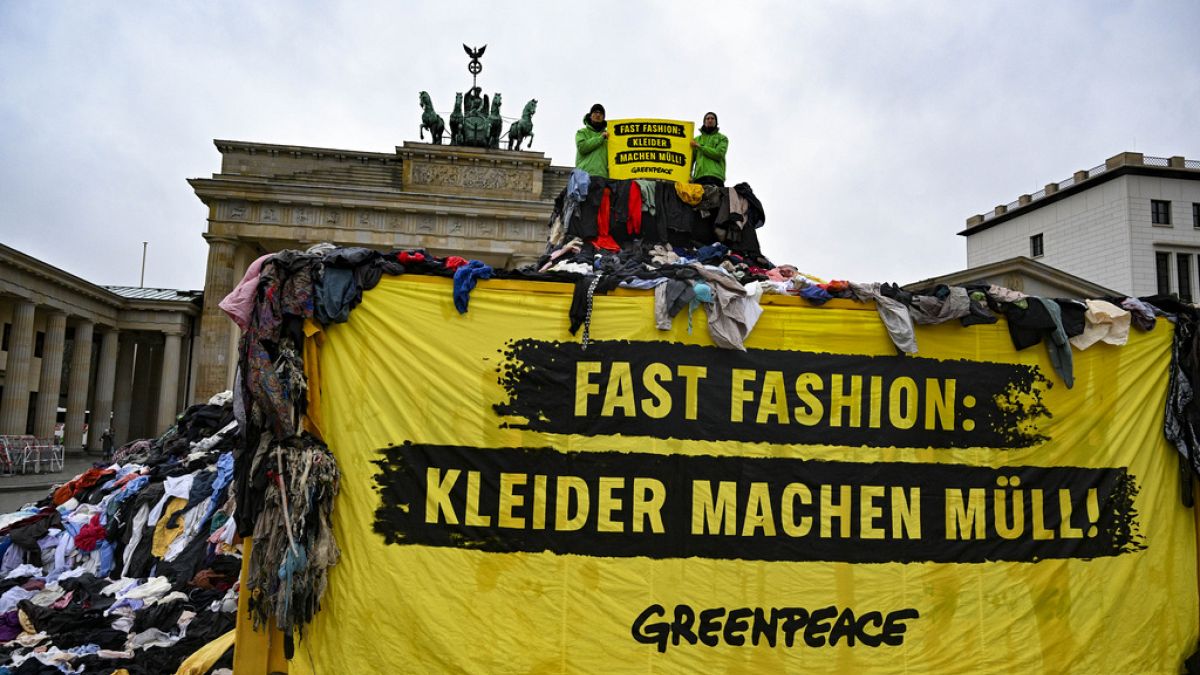Tick Tock, Europe: EFA Says EU’s Fashion Sector at ‘Critical Juncture’

Let go or be dragged, the European Fashion Alliance (EFA) suggests in a new report.
“The Status of European Fashion Report 2024” explores the EU’s current landscape—one fraught with regulatory and societal pressures as the urgency for technological advancements and educational resources continues to swell. Thus, the transnational alliance highlights the “urgent need” for sustainability, innovation and collaboration across the sector.
“This report is the result of extensive research, collaboration and forward-thinking strategies, providing a detailed overview of where our industry stands today and where it is and should be headed,” chairman of the EFA, Scott Lipinski, wrote in the report’s introduction. “The European fashion sector is at a critical juncture, facing urgent demands for sustainability, technological innovation and the cultivation of a new generation of skilled professionals.”
The bulk of the 108-page report is based on quantitative and qualitative data, the former aggregated from a survey conducted with 211 industry players, carried out in collaboration with the group’s 27 members (like the British Fashion Council and Fashion Council Germany, among others). The qualitative aspects serve to contextualize the survey results. This “mixed-methods approach” hopes to not only reiterate the urgency of taking action, but also provide a roadmap of what that action can look like, broken into five chapters.
“As we navigate this era of transformation, it is clear that the decisions we make today will shape the future of fashion in Europe and beyond,” Lipinski said. “Together, we have the power to steer the industry towards a more sustainable, inclusive and transparent future.”
Those chapters cover public perception, sustainability, directives and regulations, digitization as well as education and research. Then, the manifesto begins.
The 10 resulting recommendations “aim at valuing European creativity and power, measuring sustainability in a fair way, giving accurate and fair information to consumers,” the EFA prefaced.
First, the EFA calls for Europe’s public authorities to recognize—and respect—the value of creativity and design. Especially when that creativity forms the “backbone of manufacturing employment” across multiple industries. The European Commission explicitly needs to consider—and “even draw inspiration from,” per the EFA—the creativity-driven segment of the fashion industry when looking at big-picture horizontal measures.
“Implementing sustainability or circularity requirements in a simplistic, one-size-fits-all way could lead to the detriment of the creativity and virtuous practices that define the sector,” the report reads. “Tailored approaches are essential to support both innovation and sustainability in creative fashion.”
Also of potential detriment? The European Textile Footprint Database, in its current “unsatisfactory” form, is, ultimately, a dangerous framework to operate from, let alone base an entire methodology on. Those “ambiguities” include insufficient granularity, in turn, “obscuring diversity of the industry and unfairly penalizing high-quality materials.”
On that note, biased comparisons are harmful. Compounded with inconsistent datasets almost always full of excessive standard deviations and utter apathy toward innovation, a viable environmental policy simply cannot survive (let alone thrive) in such conditions.
“Beyond the attempts and efforts deployed within the Product Environmental Footprint (PEF) context and without denying the importance of physical durability, EFA calls upon the European Public Authorities to set up a strong initiative, mobilizing in particular academic/scientific communities, for reaching a fair measuring of the multifactorial funda- mental factors of extrinsic durability,” the second request reads. “EFA advocates for the inclusion of information on social aspects in textile and fashion environmental labeling.”
Giving accurate and fair information to consumers is another call to arms. Digital product passports (DPPs), for example, can be successful—if implemented in a “legitimate, scientific and technical framework.”
Much like the rest of the industry, DPPs are nuanced. Nuance requires precision. What makes sense for open-loop recycling may not make sense for fiber-to-fiber recycling. The assumption it would ultimately undermines the recycling sector at large.
“Understanding and implementing these new regulatory standards requires substantial human and financial resources—whether for collecting the data needed to properly inform consumers on a variety of elements including through the DPP, setting up reliable traceability along complex value chains, implementing internal systems for the management of and the reporting on unsold goods, managing the collection of data and their reliability, confidentiality and security—will be a heavy task and can appear as a burden,” the EFA said. “The challenges are numerous and substantial.”
At a “critical juncture” for Europe’s fashion sector, the EFA—which gathers European fashion councils—was founded in 2022 to function as the collective voice fighting for the industry’s circular transition.
“The challenges we face are not insurmountable, but they require collective action, collaboration and a shared commitment to change,” Lipinski said. “To achieve meaningful progress, we need all stakeholders around the table—designers, manufacturers, retailers, educators, regulators and consumers. Collective collaboration: the core spirit of the European Fashion Alliance.”
Related
Scotland’s biggest landowner is fashion brand billionaire
A European fashion tycoon is the biggest landowner in Scotland—and perhaps even the UK. Danish billionaire Anders Holch Polvsen named the Highlands' richest
EU targets food and fast fashion in new war on…
Polish presidency of the EU Council announced breakthrough in early hours after marathon overnight talks on food waste reduction targets and measures t
Fashion must-haves for your spring semester in Europe
Preparing to study abroad can be incredibly intimidating. With all the emotional turmoil you’ll face in the weeks prior, the last thing you�
Worldview: Ukraine’s Adaptive Fashion for the War Wounded
🇺🇦 Ukrainian Fashion Week presents adaptive clothing for combat injuries. More than 40 fashion brands presented their latest collections at Ukrainian Fash











